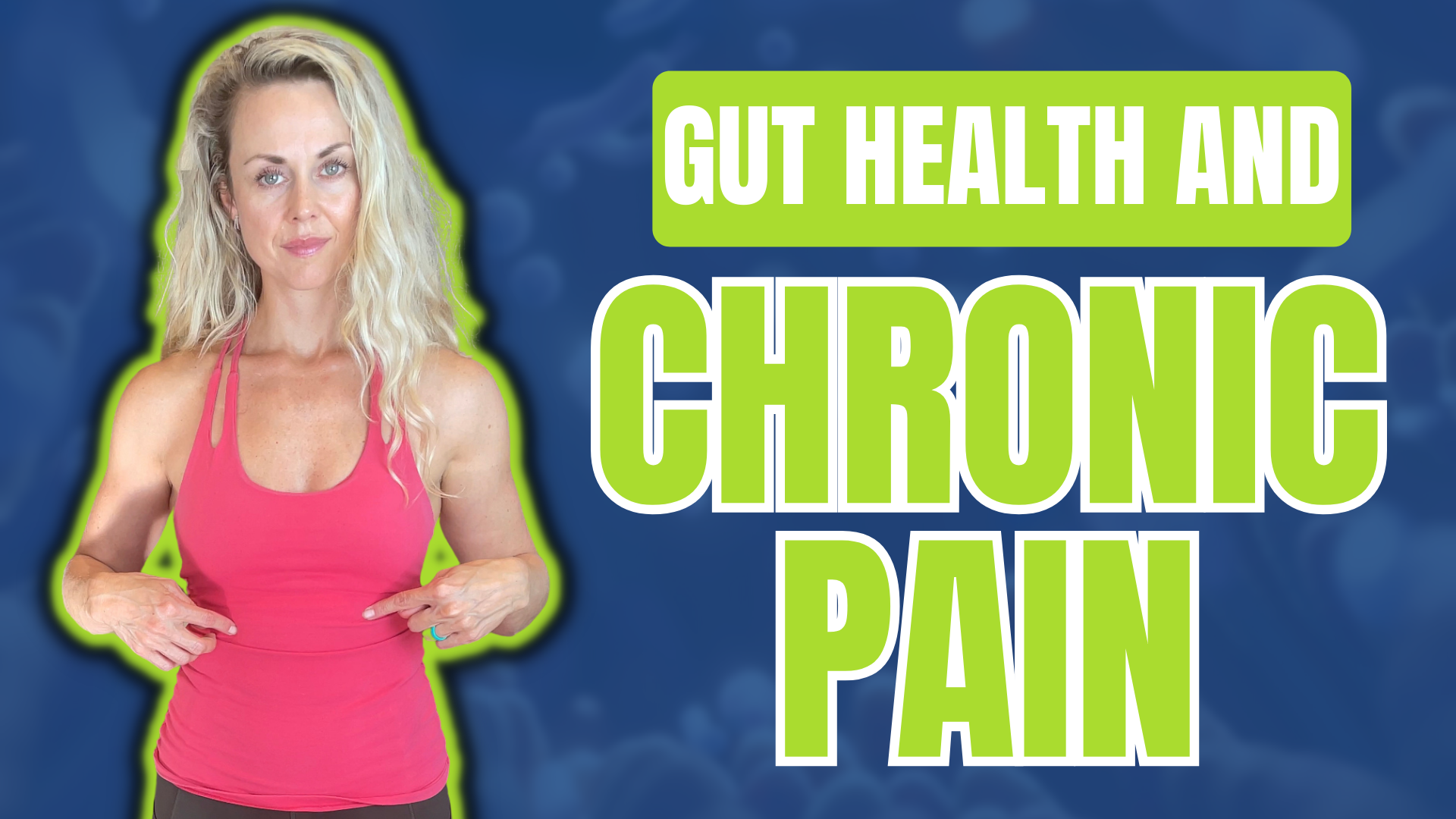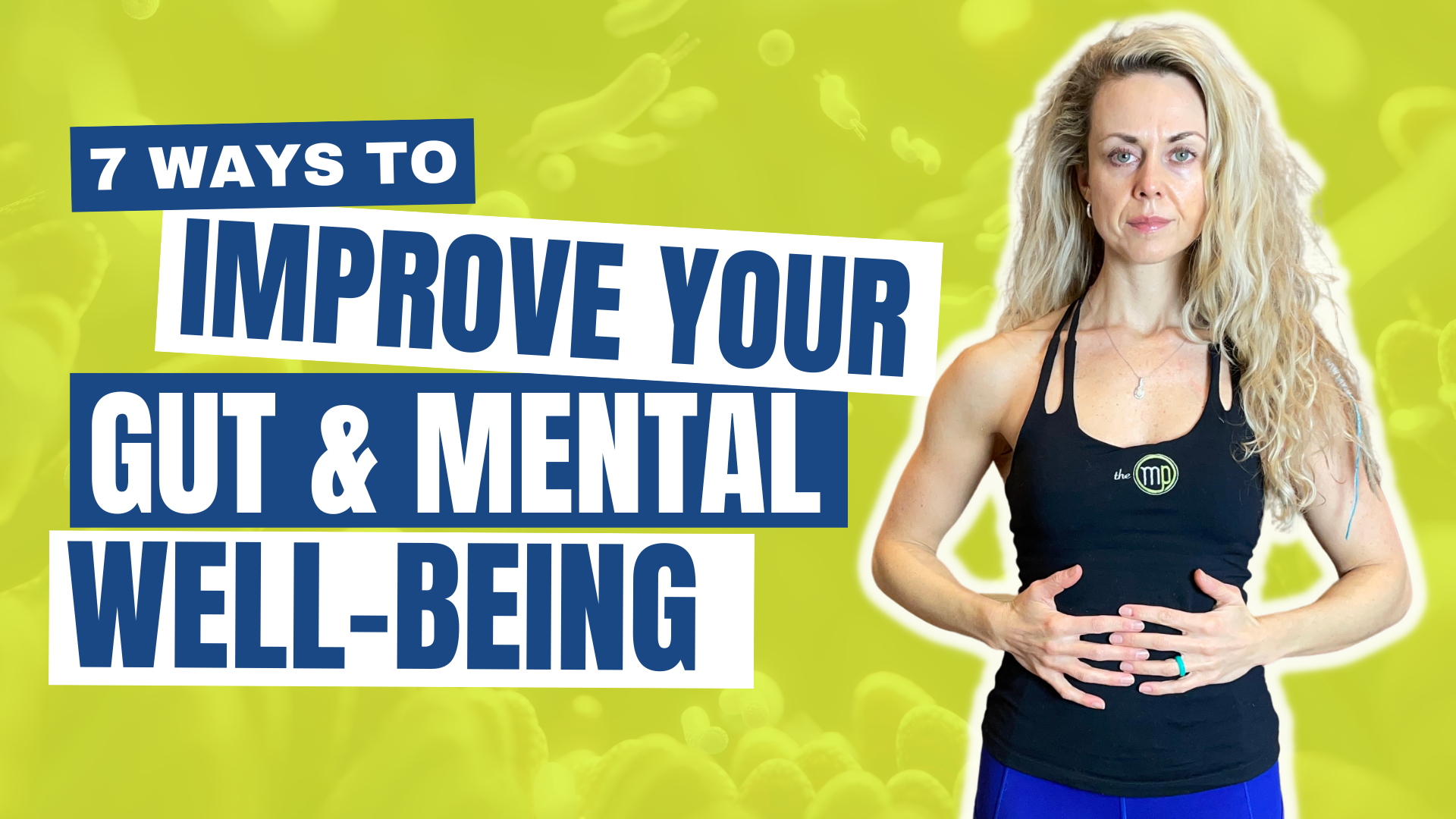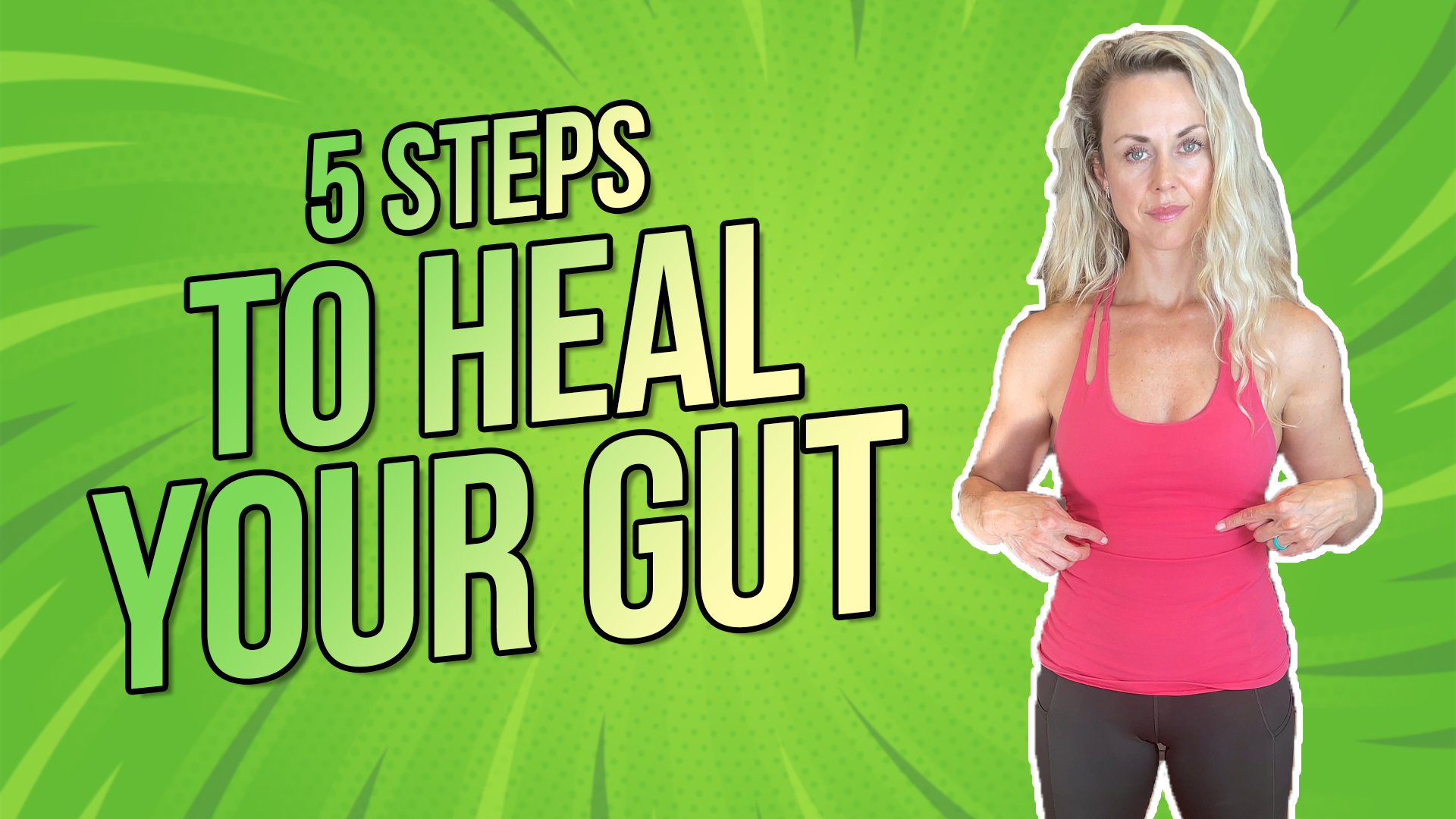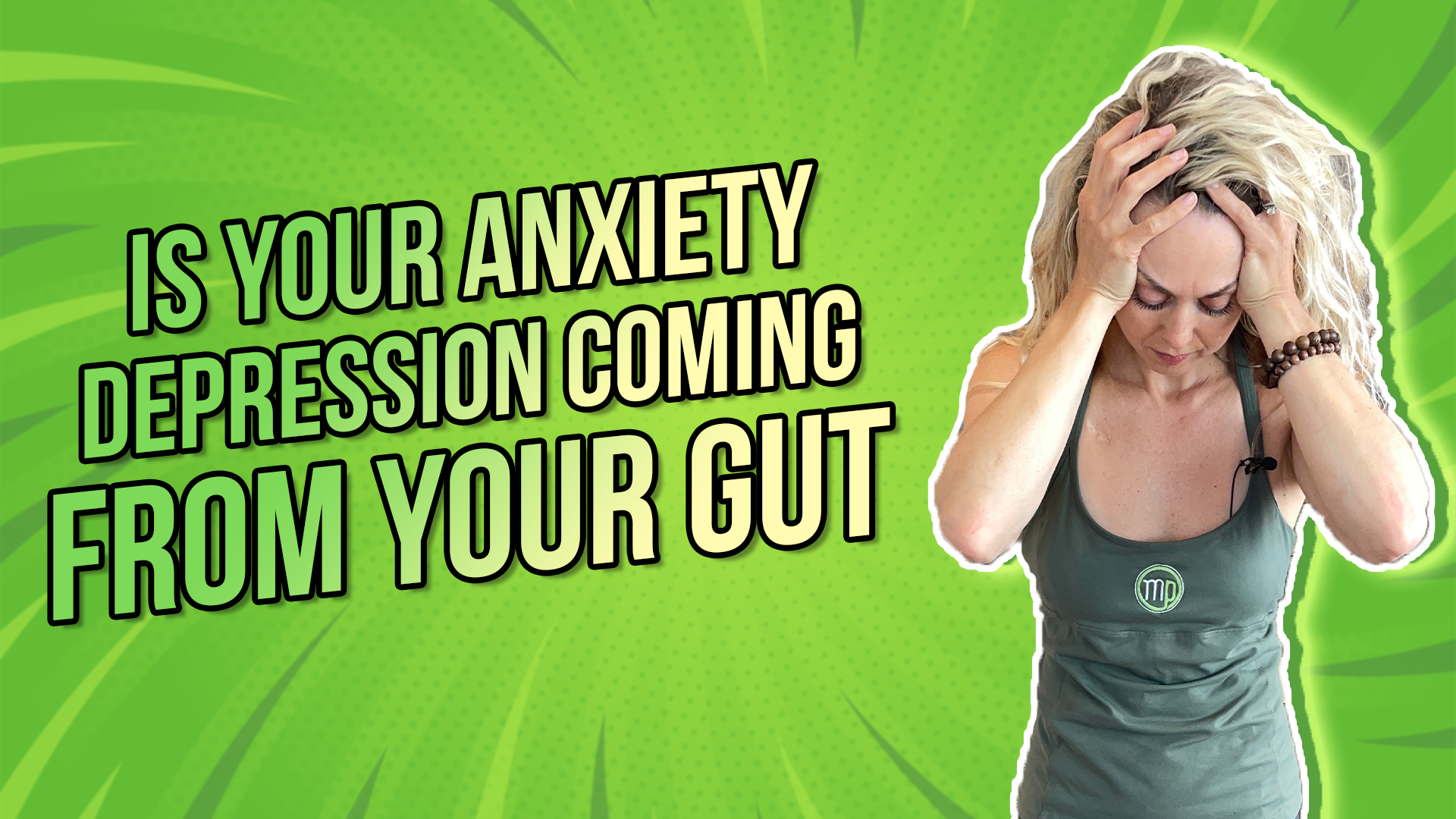Are you experiencing chronic pain? Perhaps you’ve been to pain management doctors or health professionals, and you can’t seem to resolve this chronic pain that is deeply affecting the quality of your life.
We have seen so many people come into our clinic with chronic pain, and I think that it’s important for you to understand if you are experiencing this — how your gut plays such an important role in not only why pain is happening but how to improve it. So today, we’re going to take a deep dive into talking about chronic pain and gut health and pain-free strategies for your life.
Rather watch or listen?
Understanding chronic pain
Chronic pain is technically defined as pain lasting over 3 to 6 months. Now, if we have acute pain, let’s say, for example, an ankle sprain. You step off a curb and roll your ankle, and you experience an acute response, which is your natural defense and repair mechanism. White blood cells rush to the area, and there is increased blood flow. This results in swelling, pain, and possibly redness.
This is a normal response, precisely what our system is supposed to do. However, in the case of chronic pain, there is no obvious tissue damage at this point. For instance, with an ankle sprain, you would typically have damaged the ligament in the ankle. In that case, there was actual tissue damage that occurred. When we experience chronic pain, there is no actual tissue damage. Nevertheless, our brain continues to perceive this pain. It keeps telling us that there’s still pain and that something needs to be resolved.
We can experience a variety of chronic pain conditions. For instance, arthritis, including osteoarthritis, psoriatic arthritis, and rheumatoid arthritis, can lead to ongoing inflammation, resulting in chronic pain. The keyword here is inflammation. Whether it’s autoimmune in nature or osteoarthritis, it involves inflammation. It’s essential to recognize the role of inflammation in chronic pain.
Another example is fibromyalgia, which can cause widespread musculoskeletal pain, along with issues like sleep disorders, memory problems, and mood disorders.
Additionally, we can have conditions like allodynia, where there is an increased sensitivity to pain. Think of this as hypersensitivity; for example, when something lightly touches your skin, it shouldn’t theoretically cause pain, but it can trigger an exaggerated response from the nervous system.
In essence, when considering pain, we should focus on how our nervous system processes it. As I mentioned, we have acute pain and chronic pain. Chronic pain is unique because it involves sensitization of the nervous system, which continues to perceive pain even after the tissues have healed.
Gut’s role in pain
Now, let’s discuss the role of the gut in pain. As I mentioned earlier, inflammation is closely tied to our natural defense and repair mechanism, which is crucial for maintaining our overall well-being. Our immune system is performing the necessary functions.
Consider the gut and the microbiome, where we have over 400 million different bacteria residing. These bacteria play protective roles in our immune health and immune modulation. They also contribute to the synthesis of neurotransmitters and play a vital role in digestion and nutrient metabolism. Moreover, they affect the effectiveness of therapeutics, medications, supplements, and various other bodily functions.
It’s worth noting that the gut comprises 70% of our immune system, thanks to the gut-associated lymphoid tissue (GALT). This specific lymphoid tissue has a profound impact on our entire immune system, making it incredibly powerful.
If we have any type of gut dysregulation, such as dysbiosis (an imbalance of bacteria), SIBO (small intestinal bacterial overgrowth), leaky gut, i.e., intestinal permeability, parasites, or poor digestion, this can lead to a whole host of problems, pain being one of them! If we have poor intestinal health, for example, we may not be absorbing our nutrients properly. This can lead to micronutrient deficiencies and even macronutrient deficiencies, and so on. Therefore, the gut plays a massive role in chronic pain. In every patient I’ve ever worked with who has chronic pain and inflammation, we consistently see, time and time again, with stool tests, that the gut plays a huge role in their pain.
When you’re really trying to uncover some of the underlying causes of your chronic pain, you do want to look at specific testing. This could include stool testing and examining specific inflammatory markers, such as high-sensitivity C-reactive protein, homocysteine, and sedimentation rate. There are really specific things that we can look at to get a better picture of this chronic pain and inflammatory cycle. Once you’ve done that and have more information, you can also explore things like a micronutrient panel to understand where you or someone you love might be deficient.
Pain management strategies you can use
Here are some pain relief strategies you can use by addressing your gut.
1. Address your nutrient intake
This seems the most obvious, but addressing your nutrient intake is just the beginning. Are you eating a diet that is whole foods and high in fiber to enhance the diversity of your microbiome? Having a diverse and fiber-rich diet can be one of the most helpful things for your microbiome. You can also focus on consuming different colors and nutrients. We often say, “Eat a rainbow,” and that’s not just art; it’s also science. Eating a variety of colors provides you with nutrients, phytonutrients, and antioxidants that can help mitigate oxidative stress, which, in turn, helps reduce ongoing inflammation that might be contributing to your chronic pain.
Herbs and spices can be powerful additions to your diet. Consider incorporating items like turmeric, ginger, cloves, and rosemary. You can either add them to your meals or take them in supplement form. Depending on what you discover from potential stool tests or a more in-depth examination, you may want to consider a specific gut protocol to address any underlying infections, dysbiosis, or inflammation that may be occurring in the gut.
2. Consuming essential rich fatty acids
Omega-3s, mainly found in fatty fish like salmon and mackerel, play a significant role in healing, not only in reducing inflammation but also in supporting membrane health and mitochondrial function.
3. Movement
You should approach movement from a graded perspective, meaning that doing too much too soon can set you back. Movement can positively impact our digestive system, nervous system, and mitochondria, making it one of the most powerful ways to influence chronic pain. However, it must be purposeful and gradual. For example, if you’re starting to walk, don’t jump into walking for an hour. Begin with 5 to 10 minutes and gradually increase the duration as you gain confidence, feel good, and allow your tissues to adapt to the new stressor.
4. Nervous system
Lastly, let’s not forget about your nervous system. There are various ways to address your nervous system, such as through walking, hugging a friend, participating in yoga classes, or engaging in movement. Understanding chronic pain and how to address it definitely involves addressing the nervous system. If you have a history of trauma, you can check out my recent blog on that, as it’s also an important factor to consider. When dealing with ongoing stressors, it’s not necessarily about eliminating stress but rather learning how to navigate through stress. Addressing your nervous system is a top priority when it comes to healing your pain.
Key takeaway
I hope you can appreciate the significant role of your gut health in your chronic pain. It’s important to understand that you can take actionable steps to alleviate your pain. Yes, it might be challenging, and yes, it’s a journey, but there are things you can do to initiate the process.
Even if you can’t perform stool testing or any testing, start with some of the steps I mentioned about optimizing your nutrition and movement, nurturing your nervous system, and improving your sleep. These actions can truly begin to transform your gut microbiome, restore your body’s balance (homeostasis), and kickstart your journey toward healing from your pain.
If you found this information helpful, please be sure to give it a like, share it with others, leave a comment below, and, of course, subscribe to our YouTube channel, The Movement Paradigm®, for weekly tips on mindset, nutrition, and movement. If you’re looking for personalized guidance on your journey and feel that you need an individualized approach, please don’t hesitate to reach out to us. We would welcome the opportunity to assist you.
If you’re interested in accessing a wide range of programs, including those on nutrition, somatics, and vagus nerve exercises, as well as movement programs to help you optimize your overall wellness, consider checking out our app, The Movement Paradigm, available on both Apple and Google platforms.
Other things that might interest you:




